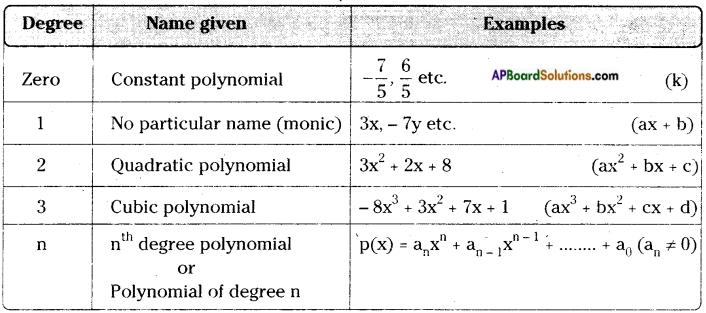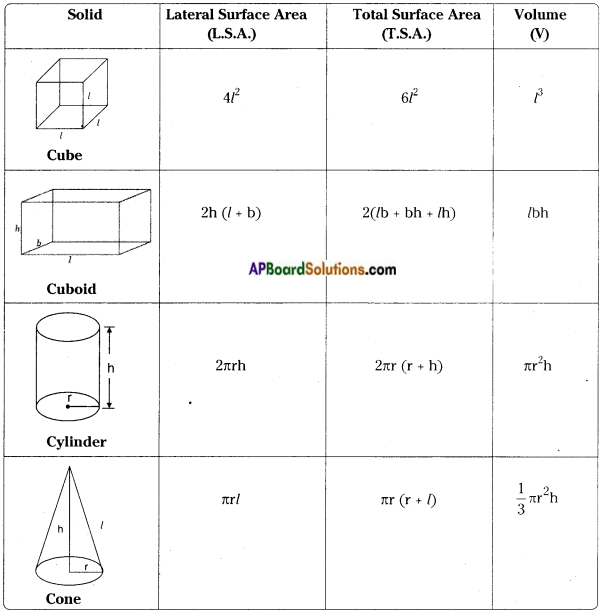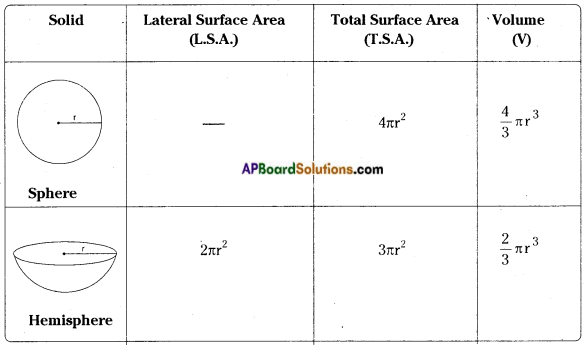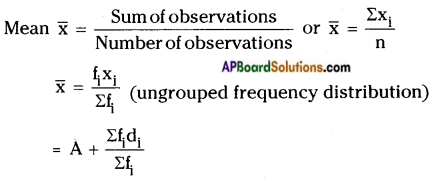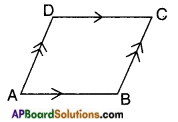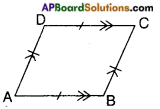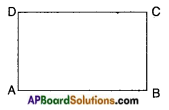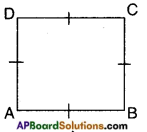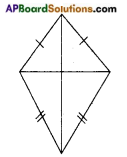AP State Syllabus AP Board 9th Class Hindi Textbook Solutions शब्दकोश Questions and Answers.
AP State Syllabus 9th Class Hindi शब्दकोश
अपनाना = తనకనుకూలముగా చేసికొనుట, to own (हमें अच्छे गुण अपनाना चाहिए।)
अरणी = యజ్ఞములో అగ్ని రాజేయడానికి ఉపయోగించునది, a wooden drill used for kindling fire (यज्ञ में अरणी की लकड़ी का उपयोग किया जाता है।)
अक्सर = తరచుగా, (usually अक्सर मैं अपने मामा के घर जाता हूँ।)
अंतर = భేదము, difference (बेटा और बेटी में अंतर नहीं करना चाहिए।)
अभिवादन = వందనము, salutation (शिष्य गुरूजी को अभिवादन करते हैं।)
अनुशासन = క్రమశిక్షణ, discipline (छात्रों को अनुशासन बनाये रखना चाहिए।)
अनुरोध = విన్నపము, request (मैंने छुट्टी के लिए अनुरोध किया।)
आँसू = కన్నీరు, tears (दुःख में आँखों से आँसू बहते हैं।)
असार = ప్రభావము, effect (बुरे कार्यों से बुरा असर पड़ता है।)
असार = సారహీనము, unfulfilled (असार विषयों से समय व्यर्थ होता है।)
आश्वासन = తోడ్పడుట, assurance (माँ, बच्चे को आश्वासन देती है।)
इंसान = మనిషి, human being (भला इंसान दुनिया में अच्छा नाम कमाता है।)
इच्छा = కోరిక, desire, wish (मनुष्य की इच्छाएँ अनंत हैं ।)
इलाज = చికిత్స, treatment (डॉक्टर इलाज करते हैं।)
इरादा = నిశ్చయము, intention (दृढ़ इरादा हर काम आसान बनाता है।)
इतिहास = చరిత్ర, history (भारत के इतिहास में कई राजा हुए हैं।)
![]()
ईबादत = పూజ, worship (सदा भगवान की इबादत करो।)
ईमानदार = నమ్మకస్తుడు, honest (राजू ईनामदार लडका है।)
ईदगाह = ప్రార్థనాస్థలము, prayer place (ईदगाह में नमाज़ पढ़ी जाती है।)
उमंग = ఉల్లాసము, aspiration (स्वतंत्रता की लड़ाई में सभी में खूब उमंग थी।)
उजाला = నిర్మలమగు, ప్రకాశించు, bright (दिन में उजाला होता है।)
उल्लास = ఆనందము, delight (त्यौहार के दिन सभी में उल्लास भर जाता है।)
उपेक्षा = నిర్లక్ష్యం , తిరస్కారం, neglect/contempt (हमें किसी की उपेक्षा नहीं करना चाहिए।)
उपहार = కానుక, gift (जन्मदिन के दिन उपहार मिलते हैं।)
उपस्थित = హాజరైన, present (कक्षा में सभी बच्चे उपस्थित थे।)
उन्नति = అభివృద్ధి, progress (देश की उन्नति नागरिक के हाथों में होती है।)
उद्योग = పరిశ్రమ, industry (घरेलू उद्योगों से रोज़गार की समस्या हल होती है।)
उपभोक्ता = వినియోగదారుడు, consumer (सामान का उपयोग करने वाला उपभोक्ता कहलाता है।)
उपभोग = వినియోగం, consume (उपभोक्ता वस्तु का उपभोग करता है।)
![]()
ओझल = అదృశ్యమగుట, to disappear (थोड़ी देर पहले रोहित यहाँ से ओझल हो गया।)
कगार = బురుజు, turret (पर्यावरण को प्रदूषण की कगार से दूर करना होगा।)
क़दम = అడుగు, foot step (आगे क़दम बढ़ाने वाले पीछे मुड़कर नहीं देखते।)
कहावत = సామెత, proverb (कहावत से भाषा में चमत्कार उत्पन्न होता है।)
कारनामा = ఎవరైనా చేసినపని, deed (भारत ने दुनिया में कई कारनामे कर दिखाये हैं।)
कोख = గర్భము, womb (हम माँ की कोख से जन्म लेते हैं।)
गायब = అదృశ్యమైన, disappeared (धूप को देखकर अंधेरा गायब हो जाता है।)
गैर = ఇతరులు, others (हमें गैरों को भी अपनाना चाहिए।)
गुज़ारा = బ్రతుకు తెరువు, livelihood (काम करने पर ही गुज़ारा हो सकता है।)
गाँठ = ముడి, knot (शेखर ने अपने गुरूजी की बात गाँठ बाँध ली।)
ग्राहक = వినియోగదారుడు, consumer (ग्राहक सामान खरीद रहे हैं।)
घोषणा = ప్రకటన, announcement (पाठशाला में छुट्टियों की घोषणा हुई।)
घटिया = నీచమైన, worst (घटिया कार्य निंदनीय होते हैं।)
![]()
चेतावनी = హెచ్చరిక, warning (पुलिस ने अपराधियों को चेतावनी दी।)
चौकोर = నాల్గు కోణములు, four angled (हमारे घर का आकार चौकोर है।)
चेहरा = ముఖము, face (नरेश के चेहरे पर चोट लगी है।)
चिरायु = దీర్ఘాయు, long-lived (गुरूजी ने शिष्य को चिरायु होने का आशीर्वाद दिया।)
चुनाव = ఎన్నిక, election (हमेशा अच्छी चीज़ का चुनाव करना चाहिए।)
चपरासी = నౌకరు, peon (कार्यालय में चपरासी का कार्य महत्पपूर्ण होता है।)
चुनौती = సవాలు, challenge (लक्ष्मीबाई ने अंग्रेजों को चुनौती दी।)
ज़रूरत = అవసరము, need (साहिती को दस रुपयों की ज़रूरत है।)
जागरूक = సావధానముగా ఉండుట, alert (हमें जागरूक उपभोक्ता बनना चाहिए।)
जलपान = అల్పాహారము, breakfast (पिताजी जलपान करने के बाद काम पर चले गये।)
तलाश = వెతుకుట, to search (पुलिस को चोर की तलाश है।)
तृषा = దాహం, thirsty (शिक्षा की तृषा कभी नहीं मिटती।)
तेज़ = చురుకు, sharp (लडका पढ़ाई में बहुत तेज़ है।)
तैराकी = ఈత, swimming (राजू की तैराकी देखने लायक है।)
थकना = అలసిపోవుట, to tired (लक्ष्य प्राप्त करने से पहले थकना मना है।)
दुगुना = రెట్టింపు, double (प्रोत्साहन से काम करने में दुगुना उत्साह मिलता है।)
![]()
दायरा = పరిధి/హద్దు, limit, jurisdiction (हमें अपना दायरा ध्यान में रखकर काम करना चाहिए।)
दुआ = దీవెన, blesses (बुजुर्गों की दुआ लेनी चाहिए।)
धरा = భూమి, land (हमारी धरा हमेशा हरी-भरी रहनी चाहिए।)
धीरज = ధైర్యము, courage (हर काम धीरज के साथ करना चाहिए।)
नेतृत्व = నాయకత్వం, leadership (गांधीजी के नेतृत्व में स्वतंत्रता आंदोलन चला।)
निरंतर = ఎల్లప్పుడు, continuous (ज्ञान का प्रवाह निरंतर चलता रहता है।)
निश्चय = సంకల్పము, decision (दृढ़ निश्चय करने वाले पीछे मुडकर नहीं देखते।)
नियुक्ति = నియామకము, appointment (सरकार अध्यापकों की नियुक्ति करती है।)
नगरपालिका= మున్సిపాలిటీ, municipality (आंध्र प्रदेश में कई नगरपालिकाएँ हैं।)
पहचान = గుర్తింపు, recognition (वोटर कार्ड हमारा पहचान पत्र है।)
पिघलना = కరుగుట, melting (हिमालय का पिघलना जारी है।)
पूर्वज = పూర్వీకులు, forefather (हमारे पूर्वज महान हैं।)
प्रदूषण = కాలుష్యము, pollution (प्रदूषण से पर्यावरण बिगड़ता जा रहा है।)
परिवर्तन = మార్పు, change (समाज में परिवर्तन की आवश्यकता है।)
परंतु = కాని, but (वह मेहनत कर सकता है, परंतु आलसी है।)
![]()
प्रफुल्लित = సంతోషించుట, happy (रवि अपने मित्र को देखकर प्रफुल्लित हो उठा।)
प्रेरणा = ప్రేరణ, inspiration (मनुष्य का आत्मविश्वास ही उसकी सच्ची प्रेरणा है।)
परवाह = లక్ష్యపెట్టుట, to concern (हमें हर किसी की परवाह करनी चाहिए।)
प्रयास = ప్రయత్నము, effort (हमें सदा प्रयास करना चाहिए।)
पक्षपात = పక్షపాతము, partiality (हमें किसी के साथ पक्षपात नहीं करना चाहिए।)
परसो = ఎల్లుండి, after tomorrow (मेरा मित्र परसों विजयवाड़ा जाने वाला है।)
प्याला = పాత్ర, cup (मेज पर गरम चाय का प्याला है।)
प्यास = దప్పిక, thirst (गर्मियों में ज़्यादा प्यास लगती है।)
पीढ़ी = తరము, generation (हर पीढ़ी को पर्यावरण की रक्षा करनी चाहिए।)
प्रशासन = కార్యనిర్వహణ, administration (अच्छे प्रशासन की ज़िम्मेदारी सरकार पर होती है।)
पैगाम = సందేశము, a message (संसार के सभी धर्म शांति का पैगाम फैलाते हैं।)
प्रामाणिक = అధికారపూర్వకమైన, authentic (प्रमाण पत्र प्रामाणिक होना चाहिए।)
फुदकना = ఎగురుట, to hop (चिड़िया का फुदकना अच्छा लगता है।)
फँसना = చిక్కుకొనుట, to be entrapped (हमें बुरी आदतों में नहीं फँसना चाहिए।)
फर्ज = బాధ్యత, కర్తవ్యం, obligation, duty (हमें अपना फर्ज़ निभाना चाहिए।)
बढ़ोतरी = వృద్ధి, progress (जनसंख्या में बढ़ोतरी होती जा रही है।)
बदलाव = మార్పు, change (समय के साथ मनुष्य में बदलाव आते रहते हैं।)
बेहोश = స్పృహ కోల్పోవుట, unconscious (लड़का कमज़ोरी के कारण बेहोश होकर गिर पड़ा।)
बाँध = ఆనకట్ట, dam (नागार्जुनसागर बड़ा बाँध है।)
बढ़िया = చాలా గొప్పది, excellent (परीक्षा में अच्छे अंक लाना बढ़िया बात है।)
भेंट = కానుక, gift (भक्त भगवान को भेंट चढ़ाते हैं।)
भाँति = ఇలా, వలె, like (रामू विद्रोह की भाँति विचार करने लगा।)
भाईचारा = సౌభ్రాతృత్వము, brotherhood (भारत में सभी धर्मावलंबी भाईचारे से रहते हैं।)
माँग = కోరిక, demand (किसान बीज और खाद की माँग कर रहे हैं।)
![]()
मुलाकात = కలయిక, meeting (प्रधानमंत्री ने राष्ट्रपति से मुलाकात की।)
मासूम = అమాయకపు, innocent (छोटे बच्चे मासूम होते हैं।)
मजबूर = వివశుడైన, helpless (हमें किसी को मजबूर नहीं करना चाहिए।)
मतलब = ఉద్దేశము, purpose (अपने मतलब के लिए दूसरों का बुरा मत कीजिए।)
मुग्ध = ముగ్ధుడగుట, fascinate (संगीत मंत्र मुग्ध करता है।)
मृदुल = సున్నితము, smooth (मृदुल भाव हृदय को छू जाते हैं।)
मछुआरा = మత్స్యకారుడు, fisherman (मछुआरा मछली पकड़ता है।)
माप-तोल = తూనికలు, కొలతలు, weight & measurements (वस्तु लेने से पहले माप – तोल लेना चाहिए।)
राजनैतिक = రాజనైతిక, political (भारत – पाक की सीमा राजनैतिक विषय है।)
यशस्वी = కీర్తి గలవాడు, glorious (भारत के महापुरुष यशस्वी हैं।)
रोज़ा = ఉపవాసము, fasting (रमज़ान के महीने में रोज़ा का विधान है।)
लुप्त = అదృశ్యమైపోవుట, disappeared (गिद्ध लुप्त होते जा रहे हैं।)
लज्जित = సిగ్గుపడిన, shamed (हमें लज्जित होने वाला काम नहीं करना चाहिए।)
लालच = దురాశ, greediness (लालच बुरी बात है।)
सिर्फ़ = కేవలం, only (सिर्फ़ परिश्रम से ही सफलता संभव है।)
वलयित = చుట్టుముట్టబడి ఉన్న, ringed (भारत तीनों ओर सागर से वलयित है।)
व्यवस्था = ఏర్పాటు, system (भारत में चुनाव की व्यवस्था प्रशंसनीय है।)
शिकायत = ఫిర్యాదు, complaint (दूसरों पर शिकायत न करें।)



